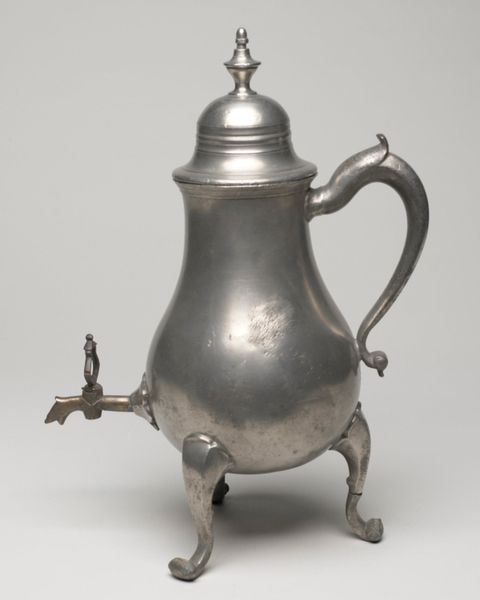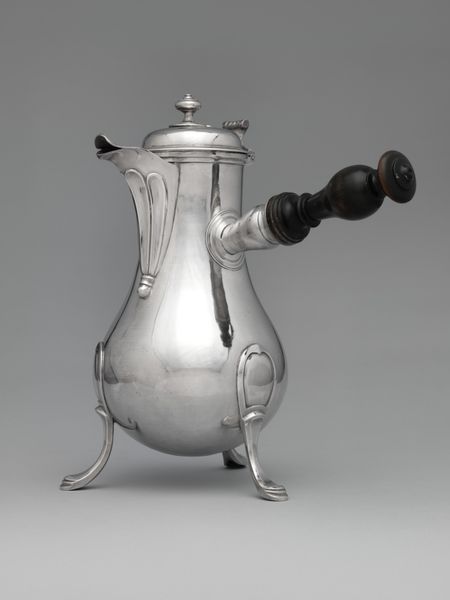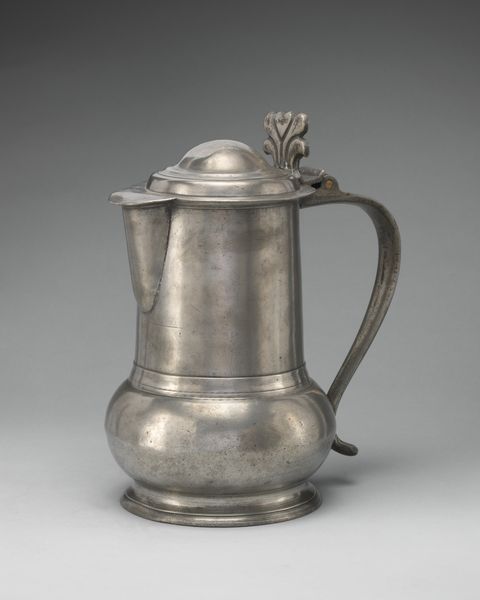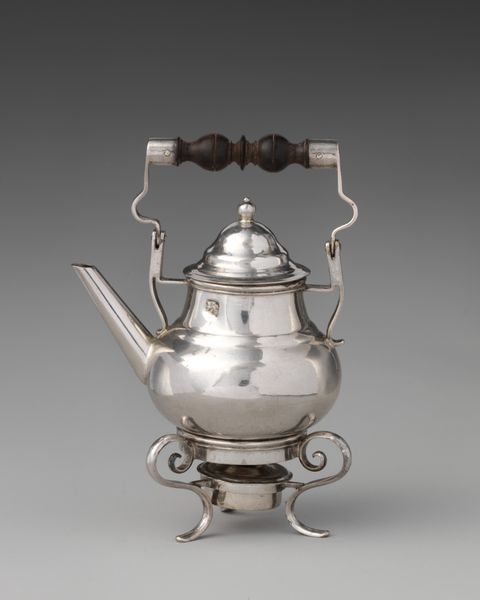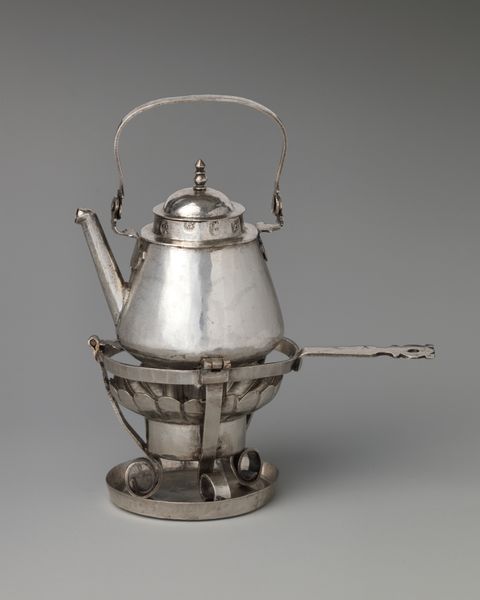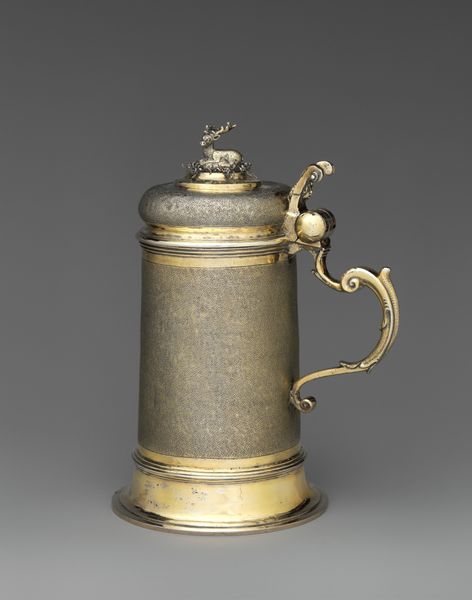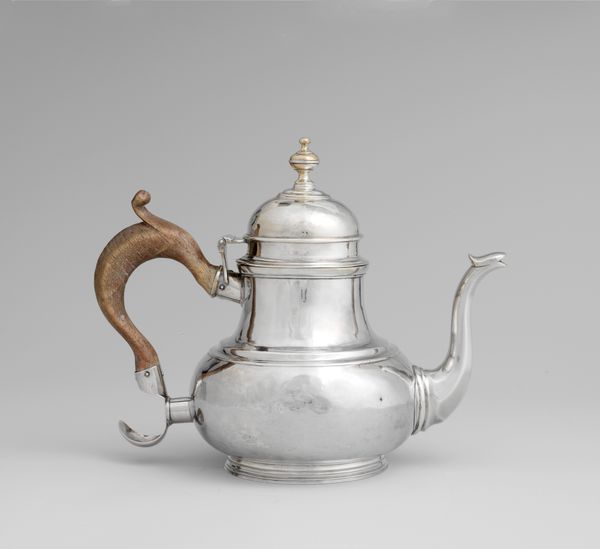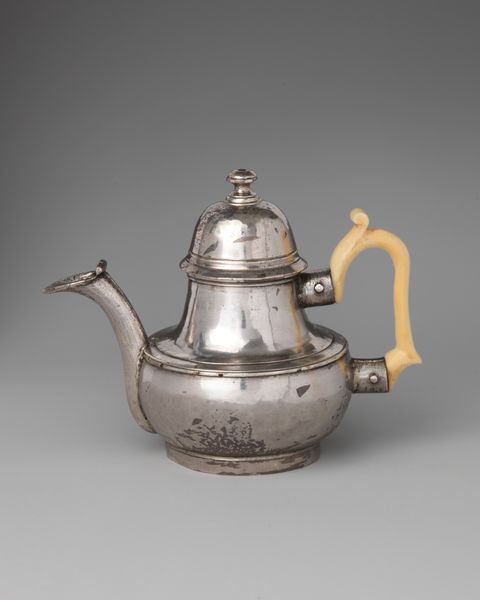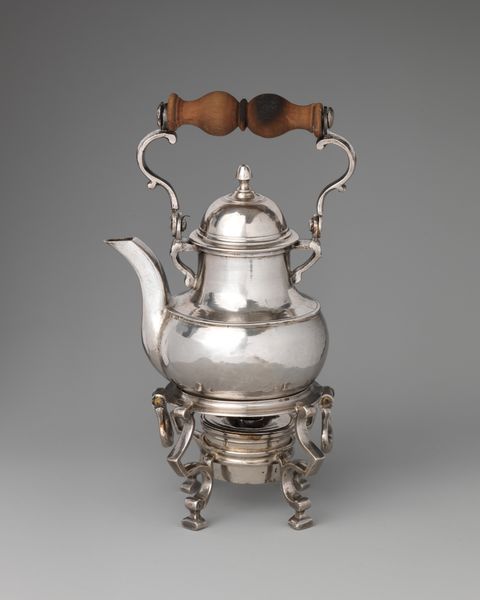
Dimensions: height 32.5 cm, height 39 cm, width 26.6 cm, diameter 17.5 cm, height 10.6 cm, diameter 9 cm, height 8.3 cm, width 20 cm, depth 18 cm
Copyright: Rijks Museum: Open Domain
Curator: Here we have a “Kraantjeskan met deksel, en bijbehorend onderblad, van tin”, or, in English, a tin tap-fountain with lid and accompanying base, crafted sometime between 1720 and 1812 by Nicolaas Kraan. Editor: My initial impression is of rigid formality, but there’s also a strange beauty in its plainness. It has such restrained ornamentation for something of the Baroque period. Curator: Yes, the tin is fascinating. It democratizes the Baroque impulse. Here’s opulence rendered in a very common metal – something quite accessible to a burgeoning middle class in that era. Editor: The object does strike me as very bourgeois; in particular the spout and accompanying decoration have that peculiar solidity and lack of grace common to that era. Tell me about the vessel beneath? Curator: Ah, the undercarriage. Its function was for containing hot coals to keep the water within the kraantjeskan warm; a very practical aspect. Consider, too, how labor was changing; it certainly reflects new dynamics of service and leisure within wealthy Dutch households. Editor: Precisely! Domestic life taking center stage. In terms of iconography, it’s more about what isn’t here, rather than what is: there aren't figures of mythological provenance, like a Bacchus. It's utterly domestic. Curator: Exactly, it presents the idea of refined living as a standard commodity, crafted by artisans for trade, and for homes far beyond court circles. Editor: It is the absence of the rarefied and emergence of middle-class rituals that is its significance: The emphasis isn’t on some arcane meaning but the ritual act of sharing. Drinking hot water from this object—imagine the communal aspect and warm symbolism! Curator: Very true. Tin itself has some symbolism: associated with Jupiter and its ties to purification rites! Editor: Perhaps… So, it does hint at deeper meaning and more than purely pragmatic utility, and for that it does indeed become a richer artifact in our gaze. Curator: Yes, this simple form is testament to wider societal shifts in both manufacturing and meaning-making.
Comments
No comments
Be the first to comment and join the conversation on the ultimate creative platform.
